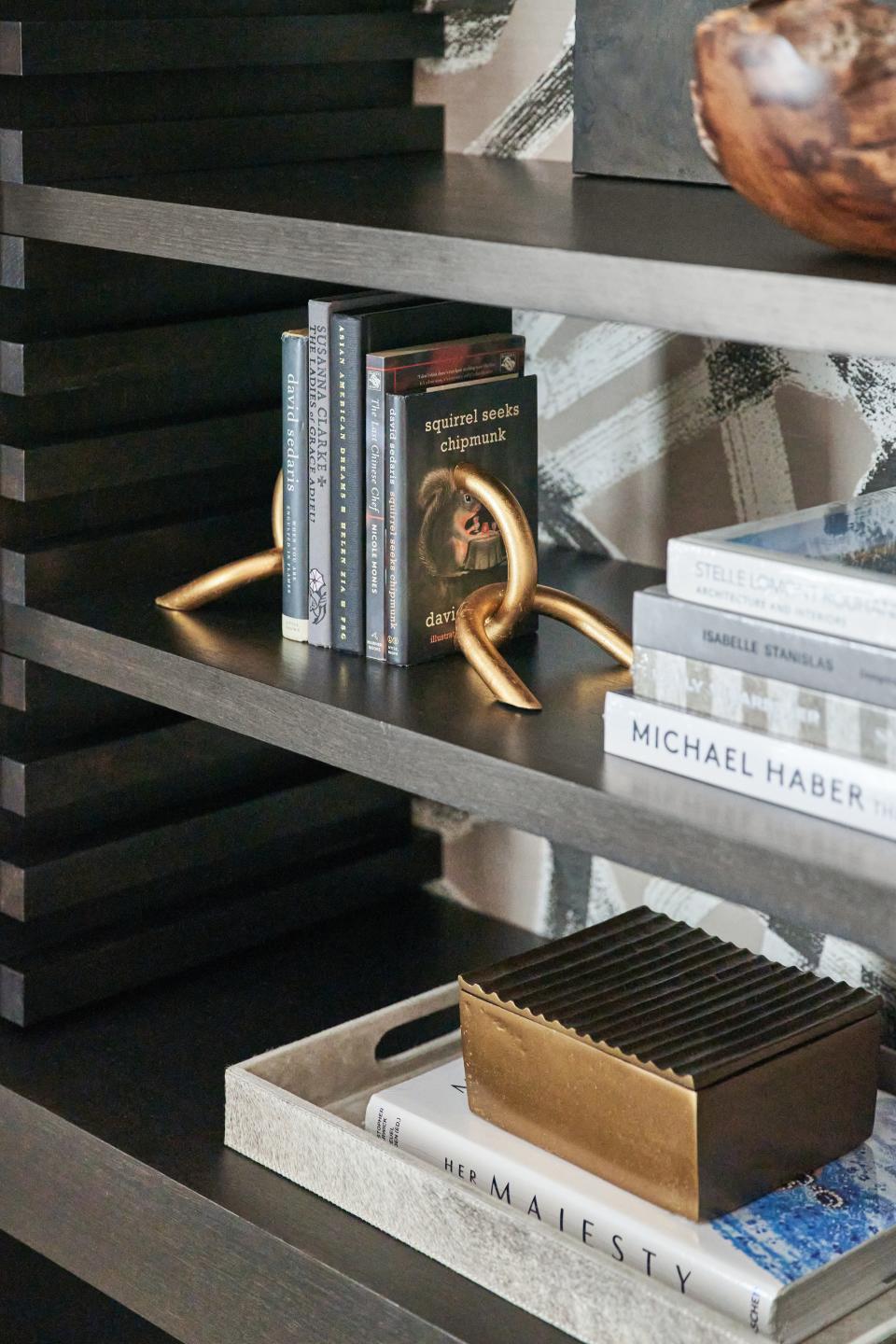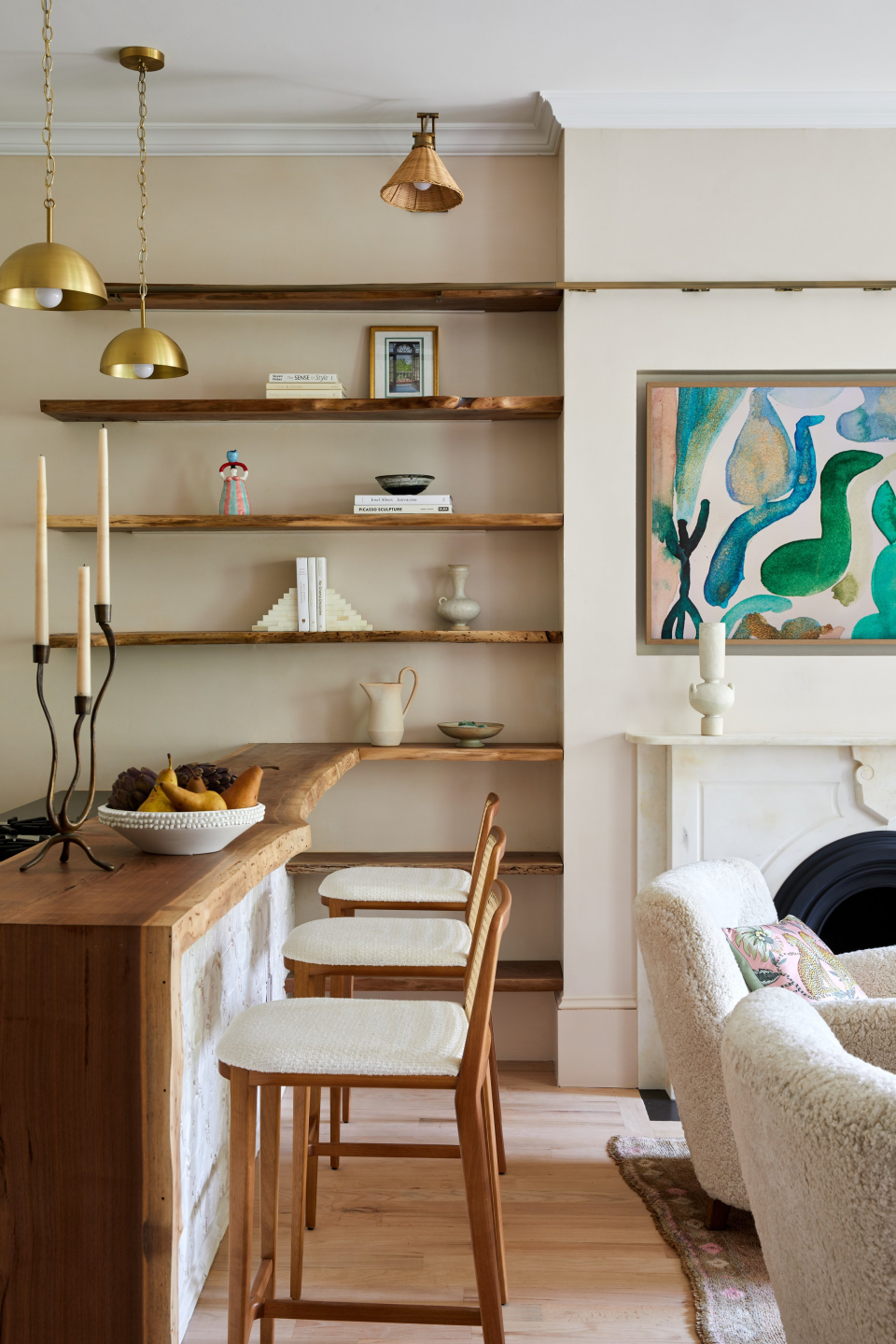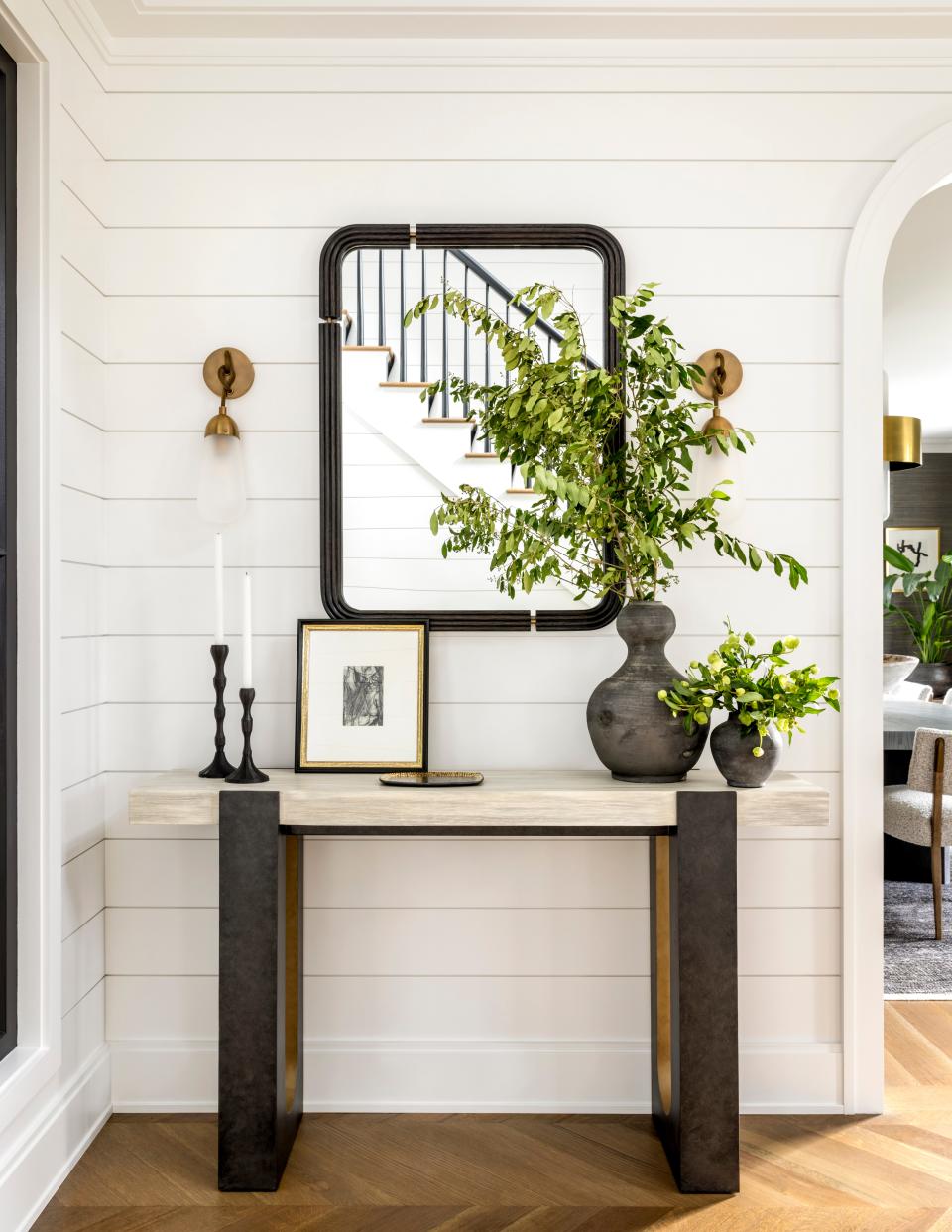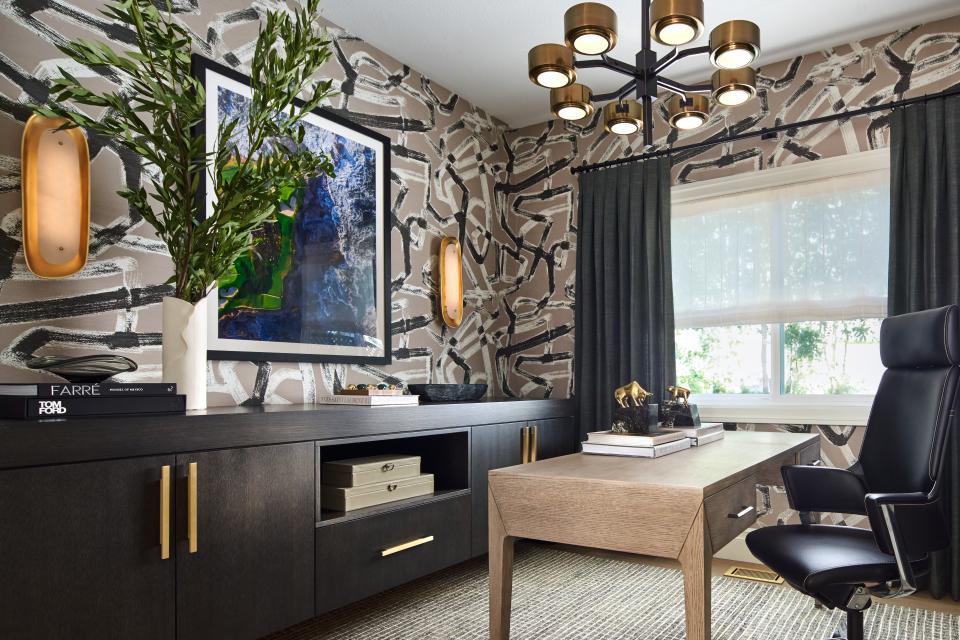8 Expert Tips for Styling Surfaces in Every Room

Photo: Tim Hirschmann
Every interior designer has their own creative process, but most would agree that styling surfaces in a home is their signature finishing touch to tie the whole project together. The presence of beloved objects and books gives a space lived-in character that can’t be achieved with beautiful furniture alone. And the intentional arrangement of such items is the difference between clutter and decor.
To help you get it right, we spoke with five members of the AD PRO Directory about their best tips for styling surfaces throughout your home. From telling a color story and playing with scale to embracing negative space and keeping it simple, these ideas will allow you to create designer-worthy vignettes on your own. Keep scrolling for their expert advice.

1. Tell a color story
For Casey Howard of Danville, California-based studio Casey Howard Interior Design, the key to a well-styled surface is telling a color story with your objects. That means “combining like colors together and considering how color placement flows across shelves.” Each vignette should have a curated palette and speak to the tones of the other vignettes in the space.
2. Play with scale and height
According to Garance Rousseau of Maison Garance in Los Angeles, “playing with scale and height allows [you] to create visually captivating compositions” on a shelf. She recommends juxtaposing tall with short, big with small, thick with thin. Howard agrees, noting that “utilizing a variety of heights creates movement to draw your eye around the space.” Rousseau also suggests using “odd number groupings, [which] are seen as more modern and interesting to the eye than even number groupings.”

3. Embrace negative space
When styling floating, free-standing, or built-in shelves, the negative space is just as important as the items themselves, says Molly Torres Portnof of Date Interiors in Brooklyn, New York. “My biggest tip is to consider negative space, or the ‘blank space,’ as much as, if not more than, positive space,” she explains. “Negative space allows the decor, books, vases, and artwork room to breathe.”

4. Incorporate a mirror
Valerie Grant of Summit, New Jersey–based studio Valerie Grant Interiors loves styling an entry table because “it is the first impression you give of the aesthetic of the home.” But no matter what look you’re going for, she always recommends including a mirror. “I love to incorporate a mirror to provide a reflective element to the space,” she explains. “A mirror also draws your eye in and around the room instantly.”

5. Bring in art
Grant and Rousseau both advocate for styling surfaces with art, in addition to objects and books. “Incorporating artwork further personalizes the space and enhances the overall look with an added layer of dimension,” Grant says. Rousseau emphasizes that “it’s a good opportunity to train your eye and introduce yourself to new artists and makers.” She continues, “As an interior designer, I have an interest in incorporating living, working artists in the styling process.”
6. Add natural touches
Natural touches like floral arrangements, potted plants, or vases filled with branches are a surface styling must-have for Howard, who insists that they “bring life to the space.” Grant is on the same page, as she “like[s] to utilize vases of various sizes and shapes that can be used to add fresh greenery or flowers that can be changed throughout the seasons.”

7. Keep it simple
Iconic fashion designer Coco Chanel once said, “Before you leave the house, look in the mirror and take one thing off.” The same editing rules apply to styling surfaces, especially entry tables, where less is more. “To style an entry table, I like to keep it simple,” shares Brittney Ferguson of Brittney Ferguson Interiors in Beaumont, Texas. “I love stacking books, adding a short bowl or candle, [incorporating] something tall like a picture frame or art, and [putting out] a fresh flower arrangement.”
8. Focus on collecting
Even if you’ve mastered the art of styling surfaces, your vignettes will only be as special as the objects themselves. That’s why Rousseau advises collecting items over time, rather than buying them all at once. “It’s about having proper planning and patience to prepare for the final touch that is styling,” she says. “A great home with longevity is about building a collection and acquiring your future heirlooms. A well-executed design is only as good as its supporting cast: the objects, the accents, the trinkets.”
Originally Appeared on Architectural Digest
More Trend Reporting From AD PRO

